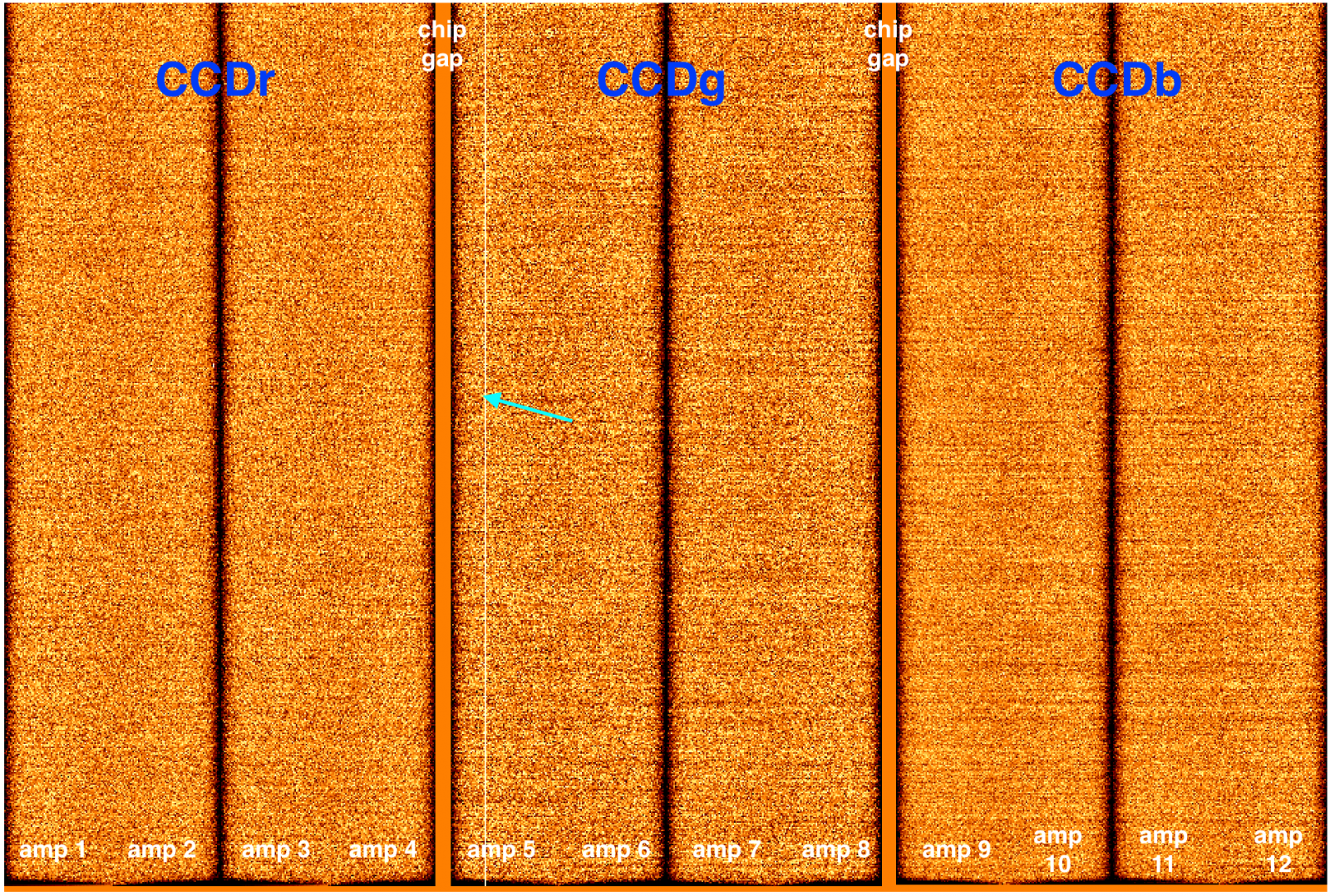Webpage on GMOS-N detector status
A new webpage with information on the current status of the GMOS-N detector array is now available here. The webpage provides details on the recent hot column features (see March 10 announcement) and updated recommendations for dither strategies to minimize the impact of the hot columns on science data. Any future updates from the ongoing characterization of the hot columns will be posted on this webpage.
Update on the GMOS-S status: upcoming intervention
As of July 2022 the noise problem on CCD2 and CCD1 persists.
GMOS-N status update
The GMOS-N detector issue reported on March 2 has largely been resolved by the full thermal cycle performed between March 2 and 3. The extended bright columns on amplifiers 7 and 12 are no longer present. The narrow bad column of hot pixels on amplifier 5 persists and saturates in longer science exposures. The following figure shows the hot column in an overscan-subtracted bias image (as marked by the blue arrow).

F2 MOS available via FT and normal queue
Multi object spectroscopy with Flamingos-2 is now offered via the latest Fast Turnaround Call for proposals and also for regular queue in 2022B. Details on this capability can be seen here.
New GMOS-N bias features
The GMOS-N detector has shown new bias features since an uncontrolled warm-up of the detector on February 26, 2022 . These features consist of a narrow bright column on amplifier 5, and broader bright columns on amplifiers 7 and 12. As a first measure to address this new issue, a full thermal cycle of the detector is being performed starting from today. GMOS will be unavailable for the next couple of nights until the thermal cycle is complete.
GMOS-S unavailable
GMOS-S is unavailable due to the re-appearance of the CTE problem on CCD1, plus high noise structure on CCD2. Troubleshooting started on Monday and is currently ongoing.
F-2 is back in operations
F-2 was successfully checked on January 26th after an intevention that lasted for most of January. New JH and HK gratings were installed and its performance will be assessed in the following days. Additionally, the J_low filter is now permanently installed.
F-2 planned shutdown
An intervention of Flamingos-2 is planned between January 3rd and 21st where the instrument will be offline. The following tasks are planned:
MOS wheel check and preventive work.
Replace the JH/HK spectroscopic filters with higher throughput ones.
Modify the Lyot wheel to allow the installation of the J-low and Y filters instead of the Hartmann masks.
Increase the number of layers in the dewars insulation, to allow more thermal stability.
GMOS-S is back!
After a thermal cycle performed over the weekend, the detector amplifier #5 is back to its normal perfromance. CCD1 CTE is also nominal, and OIWFS performance is OK after the successful repair that had been performed during September. Therefore GMOS-S is back at full capacity.
Zorro back to full operations
After a successful realignment of its optics, the first Zorro run of the semester happened between Sept 16 and 22. Zorro has both cameras operative and waiting for proposals for 22A!